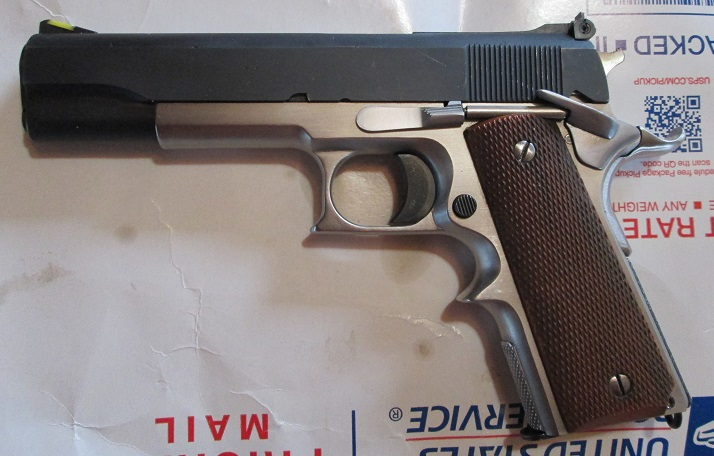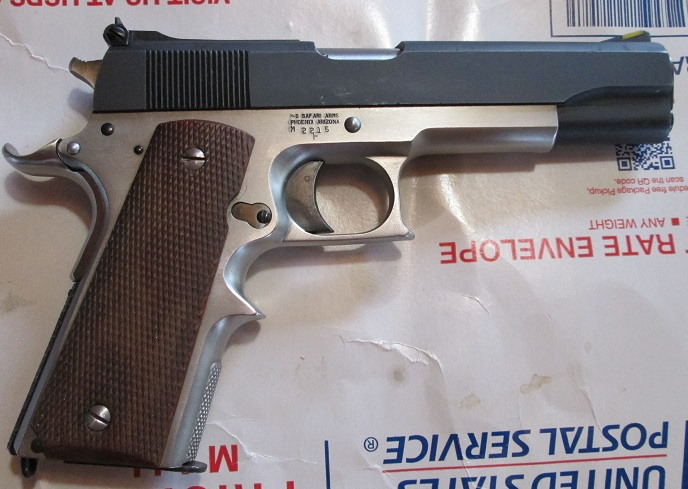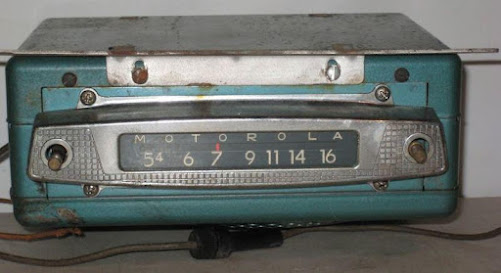Month: April 2023







Shit happens!

As a young copper, I always felt sorry for my female colleagues, and not for the reasons you’re thinking. As rookies, we quickly learned the necessity of developing iron bladders, as we were always assigned the crappy details lasting for hours, such as directing traffic, maintaining crime scene lines and other lengthy details without proper facilities nearby. One of the best words of advice I ever received from my field training officer was “at the first inkling of having to go, do it if you can.”
Jeepers Keepers
The reason I commiserated so much with the female officers when it came to using the restroom had to do with belt keepers. Keepers are leather straps with two brass snaps used for securing your duty belt to your pants belt, keeping your duty belt from shifting while drawing your gun.
When finally getting the chance for relief the females had to remove at a minimum, four belt keepers, then their Sam Brown duty belt. Then undue their garrison belt, drop their britches, and finally get to the matter at hand, all while dancing a jig, depending on severity. As you can see, men have it a lot easier. We simply unzip, retrieve, expel, return, zip and we’re done. Mission accomplished! That’s not to say men don’t have their own problems.
Excuses, Excuses…
As the old joke goes, how can a man capable of hitting a running deer at 200 yards miss the toilet at less than three feet? The ensuing miss (mess) ends up anywhere (everywhere) due to a lot of extenuating circumstances. And not just for cops either. Here’s a few excuses, or explanations, on why men can miss a relatively easy shot. Curiously, many of these techniques mimic shooting habits at the range. So, there is relevance at hand here. Pay attention!
Spray & Pray
This technique is a definite no-no! While front sight, press is our mantra on the range, we have no front sight to speak of during relief time. Regardless, we have years of instinctive shooting going in our favor. Like throwing a ball, throwing your stream is purely instinctive. After engaging your target, adjust your aim and continue firing.
Your first shots usually go high, as high as the lifted lid, depending on load pressure. When you get near the end of your ammo supply, remember there’s usually a drop in velocity. Don’t be surprised when you transition from the veracity of a full-auto shooter to the drip, drip, drip of a single-action plinker. Adjust your aim as needed.
Pressure Problems?
The ensuing miss is usually attributed to pressure problems. Depending on the severity of the emergency, we never know what the velocity will be. Like cartridges, the higher the velocity, the further the range. This variable definitely affects aim. Severe high-pressure loads have a tendency to shoot high, while lower velocity loads go low. Adjustment is necessary, once POI (point of impact) is determined so a steady flow of bullseyes ensues. Remember, we’re shooting instinctively here, like a hipshot, so please ladies, give us a break.
Double Vision?
Believe it or not, sometimes there’s a double stream initially, until the muzzle corrects itself, transitioning back to a single field of fire. Controlling two fields of fire is much more difficult. Some are capable of pulling it off, but it is difficult indeed.
Polar Expression
Funny things happen to men in the cold. Things tend shrink. It’s an act of self-preservation of the species. Subconsciously, things are pulled closer to the body, keeping everything viable and warm. Herein lies the problem. There’s nothing worse being outdoors, usually while duck/goose hunting in the bitter cold and having 5 inches of layered clothing on with only now 3 inches of release valve.
It’s search and rescue in the worst way. Peeling back layer upon layer is a dire necessary. Forget about wearing gloves. They’re more hindrance than help. Although temporary, it’s a problem. Everyone knows it’s harder shooting with a snubby, especially when shooting around a lot of cover.
Reconsiderations?
Now I have a differing opinion on the matter of feeling sorry for the trials and tribulations women must go through while in police uniform. While I still feel sorry for them, I think they may indeed hold the eventual upper hand. Sitting is like shooting at the 3- yard line. Try doing it standing up, and women will have just as much, if not more problems as men.
Bigger Targets?
Lifting the lid provides a larger target. If you do make a rim shot, simply dropping the lid covers any peripheral hits. I’d usually avoid all these problems by simply pulling off in the high country somewhere and water the pines as they say. We had a fueling depot perfect for this method and by the bare spots behind the pines it was evident I wasn’t the only one to do so.
Beware of wind direction when using this method. It’s always better to be pissed off than pissed on.
Happy New Year! 2023 looks to be an interesting year indeed!
S&W Model 19-6 Revolver 357 Snub
but they didn’t.
Here’s the story:
One evening, in 1929, two young men named William Lear and Elmer Wavering drove their girlfriends to a lookout point high above the Mississippi River town of Quincy, Illinois, to watch the sunset.
It was a romantic night to be sure, but one of the women observed that it would be even nicer if they could listen to music in the car.
Lear and Wavering liked the idea. Both men had tinkered with radios (Lear served as a radio operator in the U.S. Navy during World War I) and it wasn’t long before they were taking apart a home radio and trying to get it to work in a car. But it wasn’t easy: automobiles have ignition switches, generators, spark plugs, and other electrical equipment that generate noisy static interference, making it nearly impossible to listen to the radio when the engine was running.
One by one, Lear and Wavering identified and eliminated each source of electrical interference. When they finally got their radio to work, they took it to a radio convention in Chicago. There they met Paul Galvin, owner of Galvin Manufacturing Corporation. He made a product called a “battery eliminator”, a device that allowed battery-powered radios to run on household AC current.
But as more homes were wired for electricity, more radio manufacturers made AC-powered radios. Galvin needed a new product to manufacture. When he met Lear and Wavering at the radio convention, he found it. He believed that mass-produced, affordable car radios had the potential to become a huge business.
Lear and Wavering set up shop in Galvin’s factory, and when they perfected their first radio, they installed it in his Studebaker.
Then Galvin went to a local banker to apply for a loan. Thinking it might sweeten the deal, he had his men install a radio in the banker’s Packard. Good idea, but it didn’t work. Half an hour after the installation, the banker’s Packard caught on fire. (They didn’t get the loan.)
Galvin didn’t give up. He drove his Studebaker nearly 800 miles to Atlantic City to show off the radio at the 1930 Radio Manufacturers Association convention.
Too broke to afford a booth, he parked the car outside the convention hall and cranked up the radio so that passing conventioneers could hear it. That idea worked — He got enough orders to put the radio into production.
WHAT’S IN A NAME
That first production model was called the 5T71. Galvin decided he needed to come up with something a little catchier. In those days many companies in the phonograph and radio businesses used the suffix “ola” for their names – Radiola, Columbiola, and Victrola were three of the biggest. Galvin decided to do the same thing, and since his radio was intended for use in a motor vehicle, he decided to call it the Motorola.
But even with the name change, the radio still had problems: When Motorola went on sale in 1930, it cost about $110 uninstalled, at a time when you could buy a brand-new car for $650, and the country was sliding into the Great Depression. (By that measure, a radio for a new car would cost about $3,000 today.)
In 1930, it took two men several days to put in a car radio — The dashboard had to be taken apart so that the receiver and a single speaker could be installed, and the ceiling had to be cut open to install the antenna.
These early radios ran on their own batteries, not on the car battery, so holes had to be cut into the floorboard to accommodate them. The installation manual had eight complete diagrams and 28 pages of instructions. Selling complicated car radios that cost 20 percent of the price of a brand-new car wouldn’t have been easy in the best of times, let alone during the Great Depression.
Galvin lost money in 1930 and struggled for a couple of years after that. But things picked up in 1933 when Ford began offering Motorola’s pre-installed at the factory.
In 1934 they got another boost when Galvin struck a deal with B.F. Goodrich tire company to sell and install them in its chain of tire stores.
By then the price of the radio, with installation included, had dropped to $55. The Motorola car radio was off and running. (The name of the company would be officially changed from Galvin Manufacturing to “Motorola” in 1947.)
In the meantime, Galvin continued to develop new uses for car radios. In 1936, the same year that it introduced push-button tuning, it also introduced the Motorola Police Cruiser, a standard car radio that was factory preset to a single frequency to pick up police broadcasts.
In 1940 he developed the first handheld two-way radio
— The Handy-Talkie for the U. S. Army.
A lot of the communications technologies that we take for granted today were born in Motorola labs in the years that followed World War II. In 1947 they came out with the first television for under $200. In 1956 the company introduced the world’s first pager; in 1969 came the radio and television equipment that was used to televise Neil Armstrong’s first steps on the Moon.
In 1973 it invented the world’s first handheld cellular phone. Today Motorola is one of the largest cell phone manufacturers in the world. And it all started with the car radio.
WHATEVER HAPPENED TO the two men who installed the first radio in Paul Galvin’s car?
Elmer Wavering and William Lear, ended up taking very different paths in life. Wavering stayed with Motorola. In the 1950’s he helped change the automobile experience again when he developed the first automotive alternator, replacing inefficient and unreliable generators. The invention lead to such luxuries as power windows, power seats, and, eventually, air-conditioning.
Lear also continued inventing. He holds more than 150 patents. Remember eight-track tape players? Lear invented that.
Sometimes it is fun to find out how some of the
many things that we take for granted actually came into being!
AND
It all started with a woman’s suggestion!!









